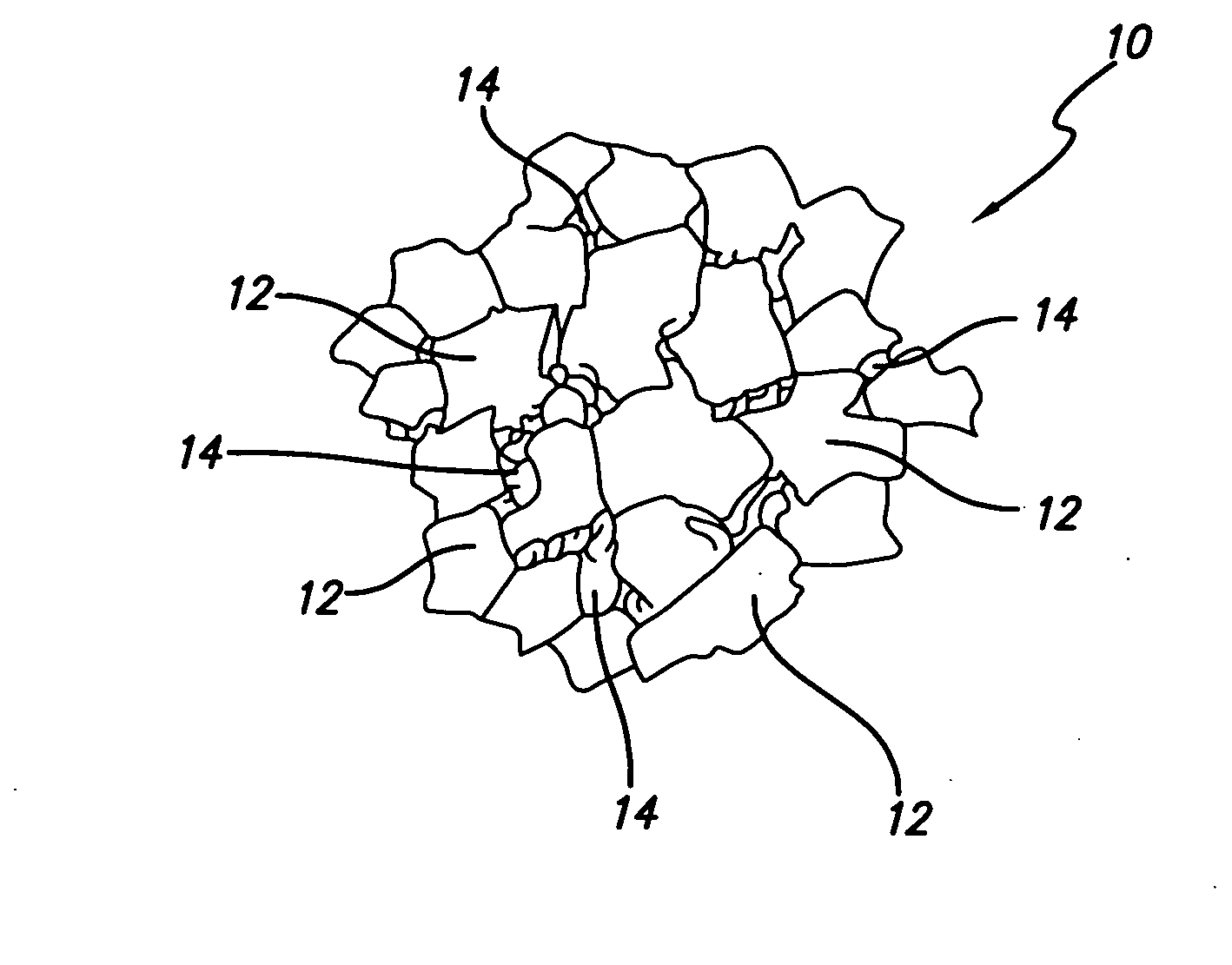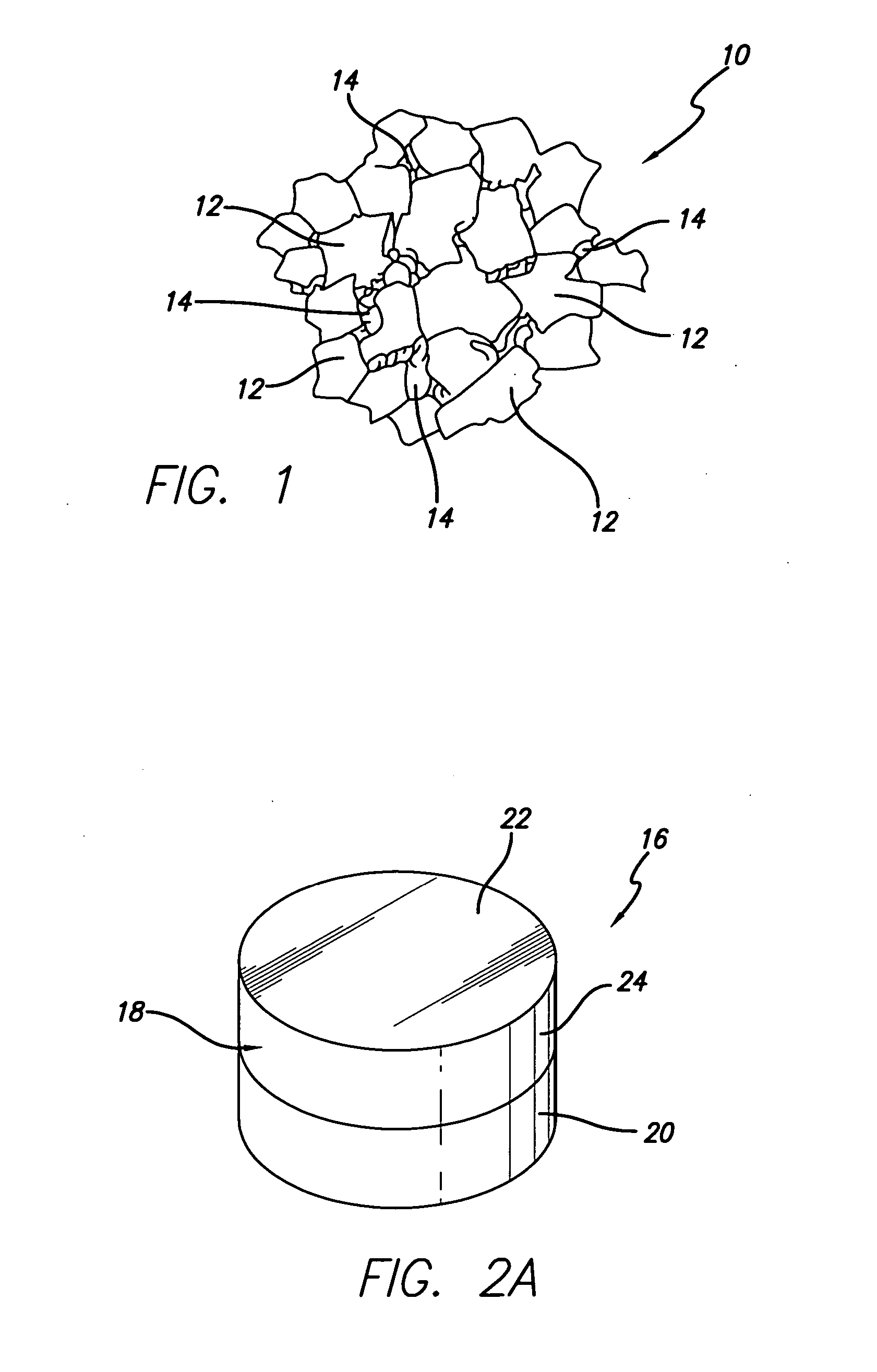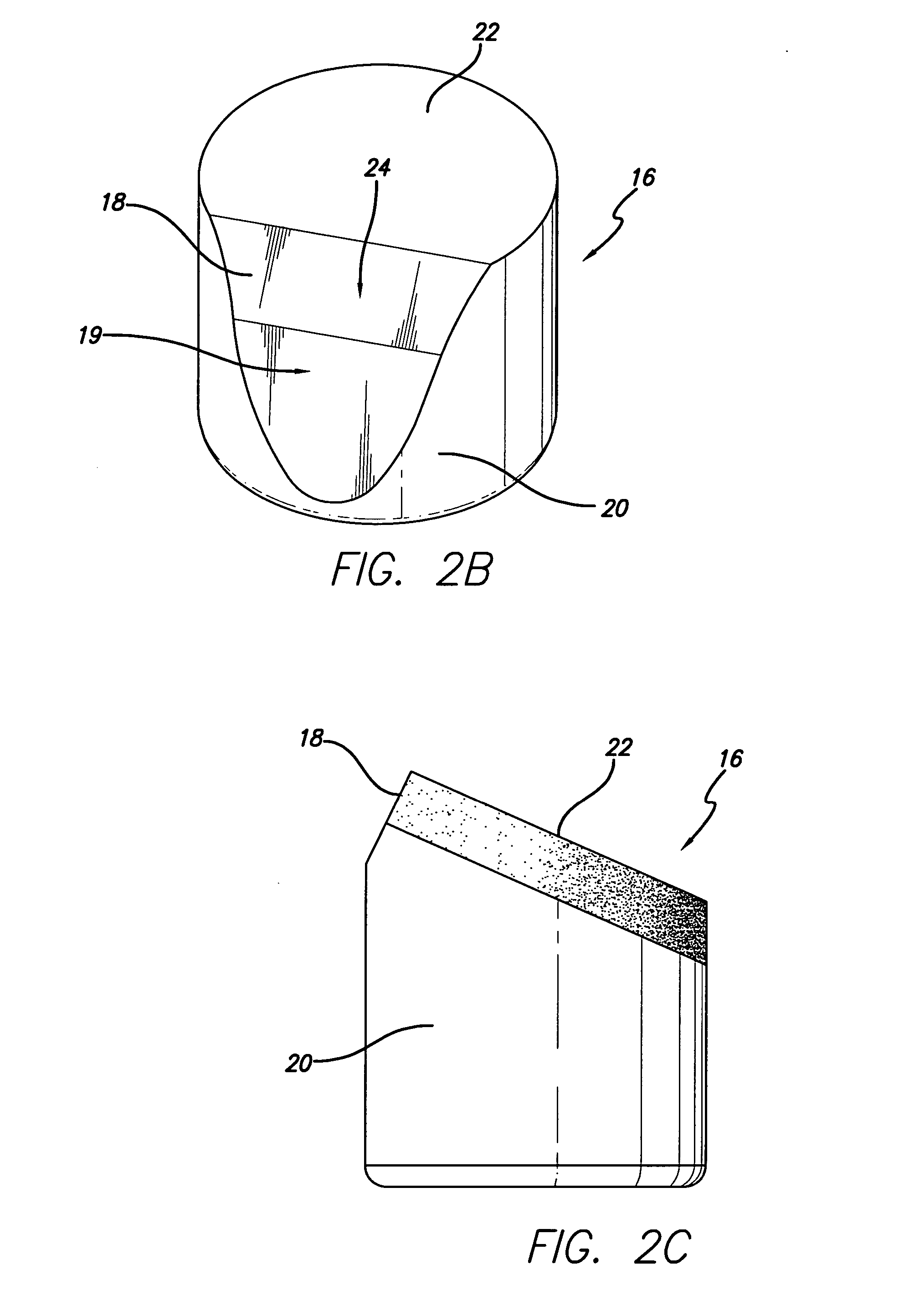Diamond-bonded bodies and compacts with improved thermal stability and mechanical strength
- Summary
- Abstract
- Description
- Claims
- Application Information
AI Technical Summary
Benefits of technology
Problems solved by technology
Method used
Image
Examples
Embodiment Construction
[0029] Thermally stable diamond-bonded materials and compacts of this invention are specifically engineered having a diamond-bonded body comprising a thermally stable diamond-bonded region, thereby providing improved thermal stability when compared to conventional PCD materials. The thermally stable diamond-bonded region comprises a polycrystalline matrix first phase and a second phase disposed interstitially between the bonded diamond crystals forming the matrix first phase. The second phase occupies all or a population of voids or pores in the microstructure that were formed by the removal of a solvent catalyst material. In an example embodiment, the second phase is formed from a material that is different from the metal solvent catalyst used to form conventional PCD.
[0030] As used herein, the term “PCD” is used to refer to polycrystalline diamond that has been formed, at high pressure / high temperature (HPHT) conditions, through the use of a metal solvent catalyst, such as those ...
PUM
| Property | Measurement | Unit |
|---|---|---|
| Time | aaaaa | aaaaa |
| Depth | aaaaa | aaaaa |
| Temperature | aaaaa | aaaaa |
Abstract
Description
Claims
Application Information
 Login to View More
Login to View More - R&D
- Intellectual Property
- Life Sciences
- Materials
- Tech Scout
- Unparalleled Data Quality
- Higher Quality Content
- 60% Fewer Hallucinations
Browse by: Latest US Patents, China's latest patents, Technical Efficacy Thesaurus, Application Domain, Technology Topic, Popular Technical Reports.
© 2025 PatSnap. All rights reserved.Legal|Privacy policy|Modern Slavery Act Transparency Statement|Sitemap|About US| Contact US: help@patsnap.com



